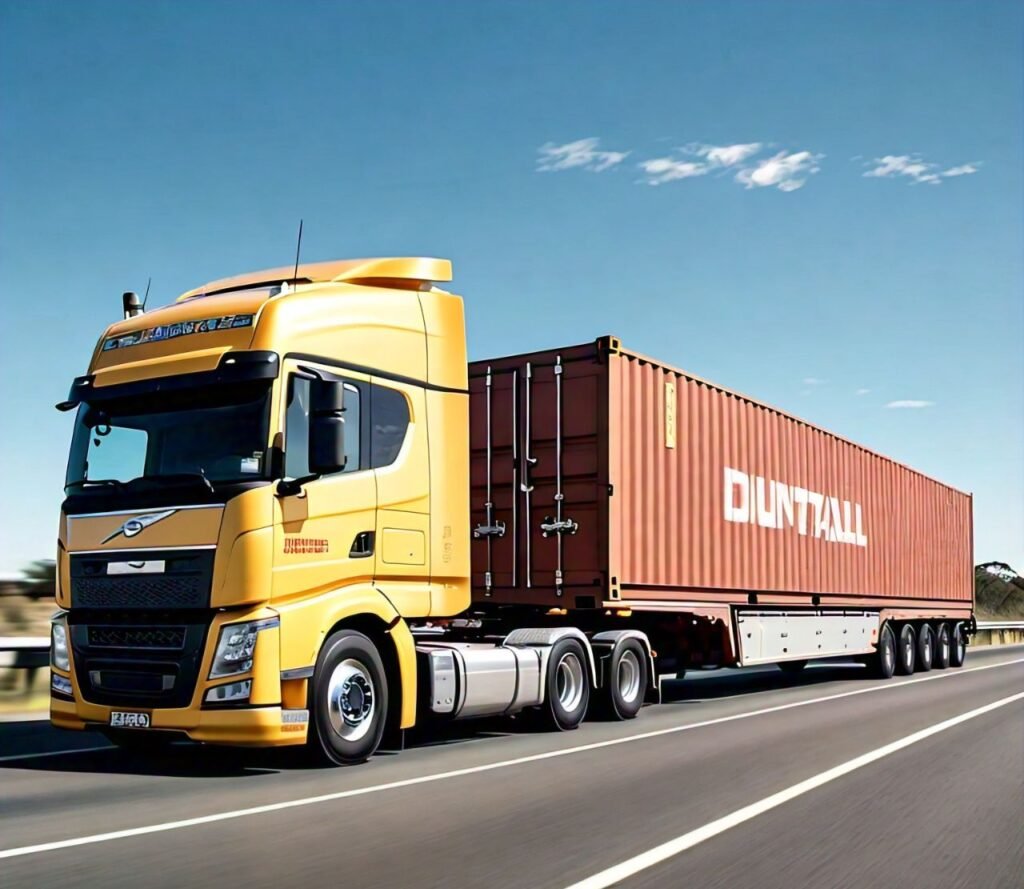Container transport is a critical component of Australia’s logistics and trade sectors. As a vast island nation, Australia relies heavily on efficient container transportation to facilitate both domestic and international trade. With its major cities located along the coast and significant distances between urban centers and rural areas, container transport serves as the backbone of the country’s supply chain.
This article will explore the importance of container transport in Australia, the different modes of transportation used, key challenges faced by the industry, and the future outlook for container logistics in the country.
The Importance of Container Transport in Australia
Australia’s economy depends heavily on trade, with exports and imports forming a large part of the nation’s gross domestic product (GDP). The country’s diverse exports—ranging from natural resources such as coal, iron ore, and agricultural products to manufactured goods—require efficient and reliable container transport to reach international markets.
Similarly, Australia imports a wide range of consumer goods, machinery, electronics, and industrial materials. The efficient movement of these goods from ports to their final destinations is crucial to maintaining the smooth operation of various industries across the country.
Key Ports in Australia
Australia has several key ports that play a major role in its container transport network. Some of the largest and most significant container ports include:
- Port of Melbourne: The largest container port in Australia, responsible for handling more than one-third of the country’s total container trade. It is a critical gateway for both imports and exports.
- Port Botany (Sydney): Located in New South Wales, Port Botany is a major hub for international container trade and is Australia’s second-largest container port.
- Port of Brisbane: As a key port in Queensland, it handles a significant volume of containers, particularly for agricultural exports.
- Fremantle Port (Perth): The main container port on Australia’s west coast, servicing trade routes to Asia, Europe, and the Middle East.
- Port of Adelaide: Important for containerized cargo destined for South Australia, this port supports the region’s mining, manufacturing, and agricultural sectors.
These ports act as vital hubs where containers are loaded and unloaded, processed, and sent to their final destinations either within Australia or overseas.
Modes of Container Transport
Australia’s container transport system relies on a combination of different transportation modes, including road, rail, and sea. Each mode plays a critical role in ensuring the smooth movement of goods across the country and beyond.
1. Sea Freight
Given Australia’s geographical location, sea freight is the primary method for moving containers internationally. Ships transport containerized goods between Australia and its trading partners across the globe. Sea freight is the most cost-effective way to move large volumes of goods over long distances, and it accounts for the majority of Australia’s trade in goods.
In addition to international shipping, domestic coastal shipping is used to move goods between Australian states. However, coastal shipping remains a small part of the overall domestic freight market, with road and rail taking the lion’s share.
2. Road Transport
Road transport plays a crucial role in moving containers across Australia, particularly for short to medium distances. Trucks are often used to transport containers from ports to distribution centers, warehouses, and retail outlets. The flexibility and reach of road transport make it a preferred option for last-mile delivery, where containers need to be delivered directly to businesses or consumers.
Despite the high costs associated with long-distance trucking, the extensive road network and the absence of comprehensive rail infrastructure in some regions make road transport indispensable for the logistics industry.
3. Rail Transport
Rail transport is an essential mode of container transport in Australia, particularly for moving containers over long distances. The country’s rail network links major ports to inland regions, allowing for the efficient movement of bulk goods and containerized cargo. Rail transport is often more cost-effective and environmentally friendly than road transport, particularly for moving large quantities of goods across vast distances.
For example, the Melbourne-to-Brisbane Inland Rail project is expected to significantly improve container transport efficiency, reducing reliance on road freight and speeding up the movement of goods between these two major cities.
Challenges Facing Container Transport in Australia
The container transport Australia faces several challenges, including geographic constraints, infrastructure limitations, and environmental concerns.
1. Geographic Distance
Australia’s vast landmass presents a significant challenge for container transport. Moving goods between distant locations, such as from Perth on the west coast to Sydney on the east coast, involves navigating long distances and complex logistics. This often results in higher transportation costs and longer delivery times, particularly when road transport is the only viable option.
2. Infrastructure Bottlenecks
While Australia has a well-developed transport infrastructure, there are areas where bottlenecks and inefficiencies exist. For example, congestion at major ports during peak periods can lead to delays in loading and unloading containers, affecting the entire supply chain. Additionally, the country’s rail network, while extensive, requires further investment to improve capacity and efficiency.
The need for more intermodal facilities—where containers can be seamlessly transferred between road, rail, and sea—is another challenge that the industry must address to enhance efficiency.
3. Environmental Concerns
As the world becomes more focused on sustainability, the container transport industry in Australia is under pressure to reduce its environmental footprint. Transporting goods by road, in particular, contributes to greenhouse gas emissions and environmental degradation. The shift toward rail transport, which produces fewer emissions, is seen as a key solution to this issue.
However, investments in greener technologies, such as electric trucks and more fuel-efficient ships, are necessary to reduce the environmental impact of container transport.
4. Supply Chain Disruptions
Global supply chain disruptions, such as those caused by the COVID-19 pandemic, have highlighted the vulnerabilities in the container transport system. Port closures, shipping delays, and container shortages have led to significant challenges for Australia’s importers and exporters. Ensuring resilience in the face of future disruptions is a critical focus for the industry.
The Future of Container Transport in Australia
Despite the challenges, the future of container transport in Australia looks promising, with several key trends and developments shaping the industry.
1. Inland Rail Development
The Inland Rail project is a major infrastructure initiative aimed at improving the efficiency of freight transport across Australia. This rail line will connect Melbourne to Brisbane through regional New South Wales, allowing for faster and more efficient movement of containers. Once completed, the project is expected to reduce transportation costs and alleviate pressure on the road network.
2. Automation and Technology
Technological advancements are set to transform container transport in Australia. Automation in port operations, such as automated cranes and container handling systems, will help reduce loading and unloading times and increase overall efficiency. Additionally, the use of real-time tracking and data analytics can provide better visibility into the movement of containers, enabling more precise logistics planning.
3. Sustainable Transport Solutions
As environmental concerns continue to grow, the container transport industry will likely focus on adopting more sustainable practices. Investments in electric trucks, fuel-efficient ships, and rail transport will play a crucial role in reducing emissions and improving sustainability across the supply chain.
4. Intermodal Connectivity
Improving intermodal connectivity, where containers can be easily transferred between different modes of transport, will be key to enhancing the efficiency of the container transport system. Developing more intermodal terminals and increasing the use of rail for long-distance transport will help create a more integrated and flexible logistics network.
Conclusion
Container transport is a vital component of Australia’s economy, enabling the movement of goods across vast distances and facilitating international trade. While the industry faces challenges such as geographic constraints, infrastructure bottlenecks, and environmental concerns, ongoing investments in technology, infrastructure, and sustainability will ensure that Australia’s container transport sector continues to thrive.
With the development of projects like the Inland Rail and the adoption of greener technologies, Australia is poised to strengthen its container transport network and support the country’s economic growth well into the future.

















































